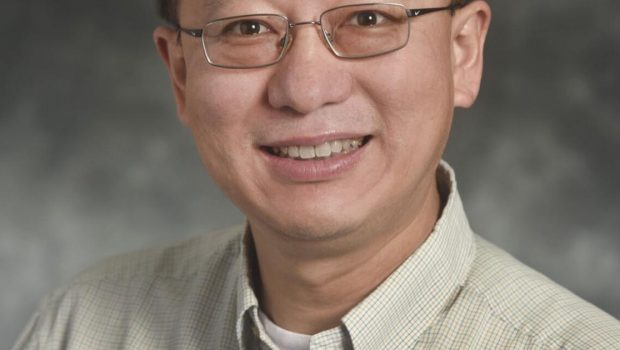Scientists at Texas A&M AgriLife Research are using artificial intelligence technology to produce algae as biofuel at a record level.
This research is led by Joshua Yuan, AgriLife Research scientist, professor and chair of Synthetic Biology and Renewable Products in the Texas A&M College of Agriculture and Life Sciences Department of Plant Pathology and Microbiology, according to AgriLife Today. The research was published in January in Nature Communications.
Yuan said these findings make algae competitive as a biofuel commodity. He added that his team uses the AI technology to predict the best inoculation concentration and the best time to harvest to allow the cell to maximize their light usage and to minimize their mutual shading.
“There are a lot of applications of this [research],” Yuan said. “Right now, the algae biofuel algal industry is focusing on high value cosmetic products because of the high price of the algae biomass produced. With this technology right now, what we can achieve is about $281 dollars per dry ton of algae biomass. To give you some reference, this makes it more competitive with the coal price. Coal is used for ethanol production and it’s much cheaper than soybean prices because the cyanobacterial also has high protein content.”
People are also reading…
The research study brought forth three impactful findings, Yuan said. The first is a way to reduce the harvest cost to efficiently harvest algae biomass.
“Basically, we were able to engineer a cyanobacterial cell surface to produce a high level of protein content called limonene,” Yuan said. “That limonene makes the cell surface hydrophobic and then the cell begins to precipitate.”
Second, Yuan said he and his team used AI technology to predict the best time to inoculate the cyanobacterial and then to actually control the life conditions to allow the cyanobacteria to keep growing at a maximum rate.
“Our technology would use AI technology to predict the best inoculation concentration and the best time to harvest to allow the cell to maximize their light usage and to minimize their mutual shading,” Yuan said. “Our technology actually overcomes this problem. We provide an auto-sedimentation, so you can trigger it to settle down by itself. That will allow a much cheaper harvesting.”
Yuan added, “We first discovered the auto-sedimentation harvesting technology and then we [said], ‘OK, how can we use this technology to address the growth limitations?’ Algae growth is limited by light penetration. So we [said], ‘OK, we can use the latest model to predict the light penetration path.’ Furthermore, we can use the light conditions to predict there are two models. To predict the growth, we use these two models. We can basically simulate, this is the concentration we want to inoculate the cells, this is the concentration we want to harvest, and then we can, at the time we want to harvest, we can trigger this harvesting technology.”
Third, Yuan added that he and his team achieved a record-level of biomass productivity at around 43.3 grams per square meter per day. For reference, Yuan said the Department of Energy has a target of 25 grams per square meter per day, noting his team’s production is about 70% higher than that mark.
Limiting factors of the team’s research include productivity and harvesting cost, Yuan said.
“The problem of any photosynthesis system is that it depends on light,” Yuan said. “For algae … they all have the same problem. It’s a dilemma, if you think about it. When it grows to too high of a concentration, the light will be limited. If the cell concentration is high, light will not penetrate and the algae grow on the surface and the solution will not be having light penetration. That’s a big problem. And then, if you have too low of a concentration, then the growth productivity is too low. So there is a fundamental dilemma of how to improve light penetration to improve the cell growth.”
The study did not initially receive federal funding, Yuan said. Instead, the research was funded by a gift from John Hood, A&M Class of 1990, and his wife, Sally, A&M Class of 1992. Beginning last October, Yuan said the Department of Energy Office of Fossil Energy and Carbon Management invested $2 million for AgriLife’s Research to work with the Southern Company to use the technology to capture the flue gas from the power plants. It will end in September 2024.
“We hope the research can go into the field to enable cheaper carbon peptide utilization to enable to algae biofuel and the algae bioproduct for animal feed and things like that,” Yuan said.








Gloss